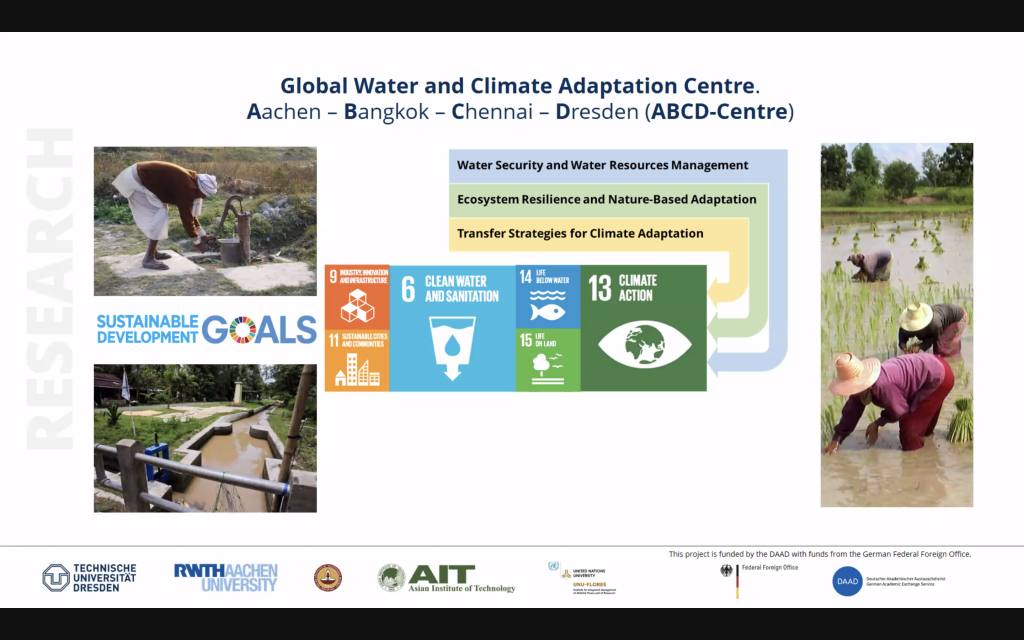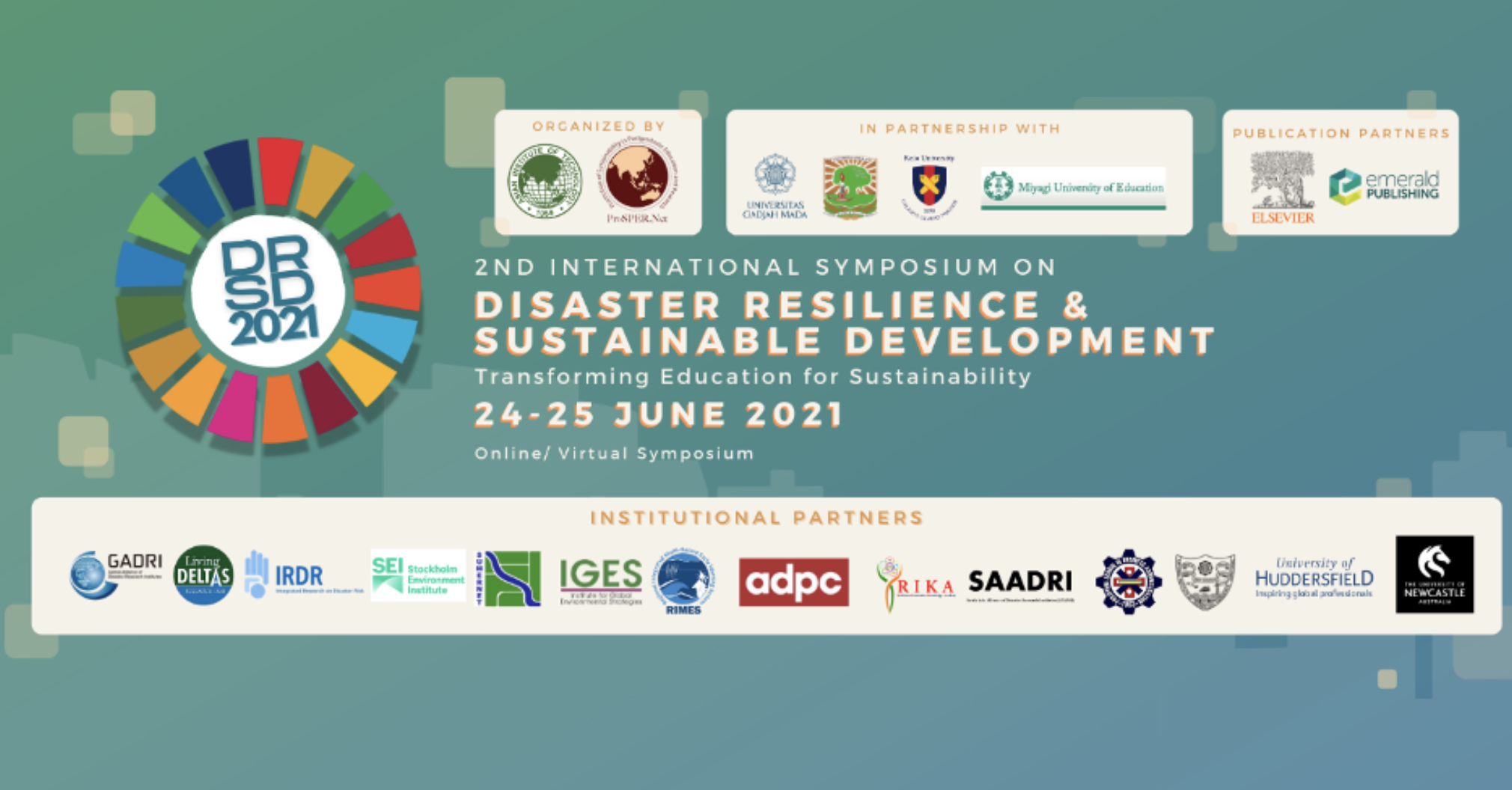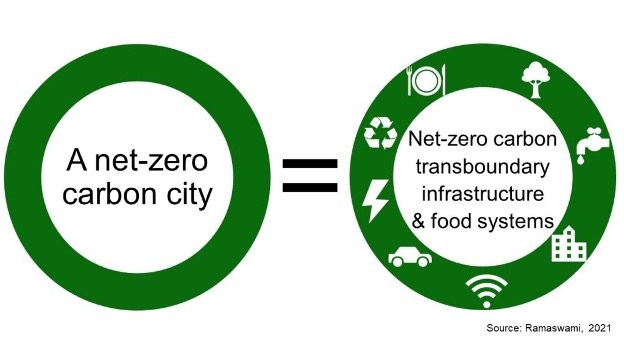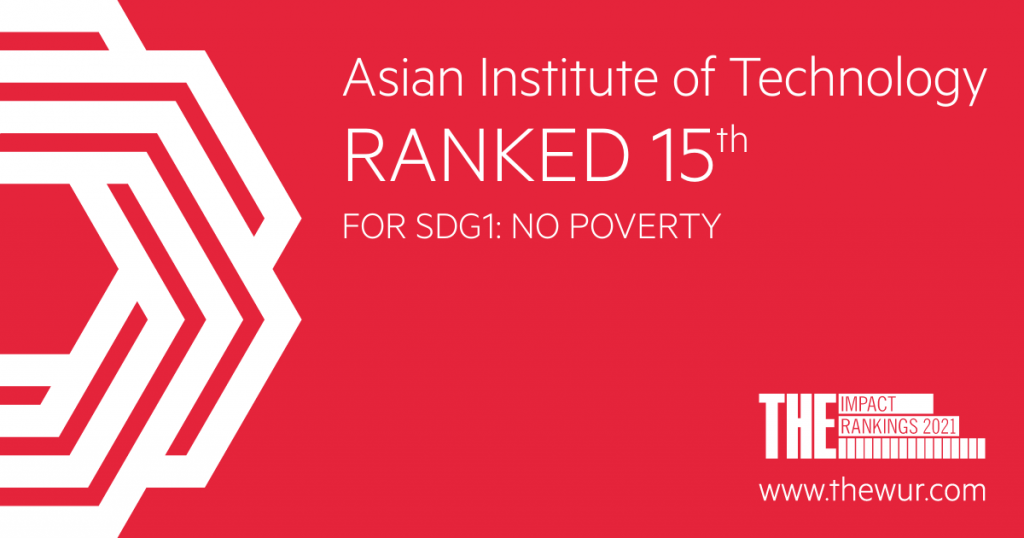By Sushil Koirala and Mae Thiwari
Poultry waste projects by AIT Department of Food Agriculture and Bioresources offer ways to turn Waste into Wealth, addressing “zero hunger” and “responsible consumption and production”.
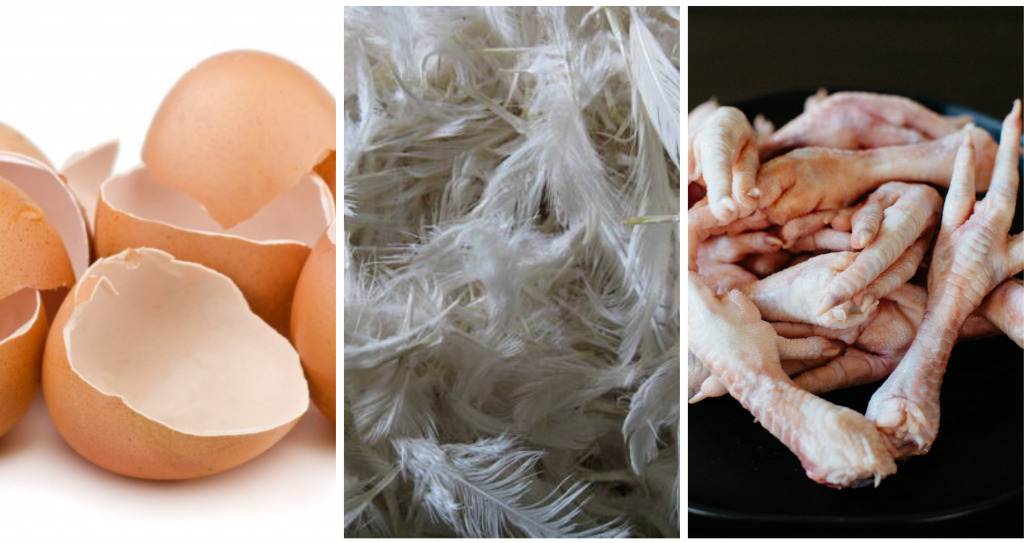
Professor Anil Kumar Anal, AIT School of Environment, Resources and Development (SERD), is leading several projects using latest technology to transform food waste into value added products – effectively turning waste into wealth.
According to Food and Agriculture Organization (FAO) of the United Nations, 1.3 billion tons of food produced for human consumption is estimated to be lost or wasted annually while 820 million people are suffering from hunger.
“These two contrary statistics prove the urgency and necessity of the utilization of nutrients and bioactive compounds from those agro-industrial by-products and wastes to address the imbalance between surpluses and shortages,” said Prof. Anil Kumar Anal.
To better manage food resources and address SDG2: Zero Hunger and SDG12: Responsible Consumption and Production, AIT Department of Food, Agriculture, and Bioresources has come up with several poultry waste projects. From chicken eggshells, feathers, to feet and bones, all are valuable and should not be wasted.
Here are what AIT researchers, under the supervision of Prof. Anil Kumar Anal, can do with what most people consider as a waste.

Eggshell membrane (ESM)
Chicken egg is a cheap protein source for people across the globe. It is also a key ingredient in many food products. It is estimated that worldwide there are 250,000 tons of eggshell waste produced annually.
Little do people know how valuable the wasted eggshells are.
Off the total egg weight, 11% is the weight of eggshell membranes (ESM). ESM is a very good source of bioactive compounds which can be extracted into peptides with antioxidant and antimicrobial properties.
 The team at Food Engineering and Bioprocess Technology Lab has developed a based on microbial method that feeds on the eggshell membrane to produce peptides. Peptides can be used in food, feed, or cosmetic industry to produce valuable products.
The team at Food Engineering and Bioprocess Technology Lab has developed a based on microbial method that feeds on the eggshell membrane to produce peptides. Peptides can be used in food, feed, or cosmetic industry to produce valuable products.
In addition, these peptides have shown to function well in human gastro-intestinal (GI) tract from an observation using simulated GI Fluids. With no undesirable side effects and bacterial drug resistance shown, the peptides extracted from ESM are preferred as food additives over antibiotics.
Chicken feathers
Globally, 400 million chickens are being processed daily. With an average weight of 125g of feather per chicken, there are about five million tons of dry feathers wasted every day.
Chicken feathers are a major poultry waste since they are difficult to be processed due to large amounts of highly resistant keratin protein in their native form. They are excellent reservoirs of biomolecules with more than 82% crude protein, mostly keratin, however.
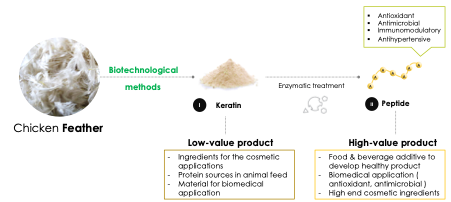 Realizing this, the AIT Biotech lab team knew they had to isolate a completely new bacteria that could degrade keratin protein to produce peptides with added functionalities. The new bacteria could degrade 84.25 % of feather keratin protein to produce peptides. With this green technology, the zero waste based fermentative production of peptides were carried out at the room temperature (30 °C) in seven days.
Realizing this, the AIT Biotech lab team knew they had to isolate a completely new bacteria that could degrade keratin protein to produce peptides with added functionalities. The new bacteria could degrade 84.25 % of feather keratin protein to produce peptides. With this green technology, the zero waste based fermentative production of peptides were carried out at the room temperature (30 °C) in seven days.
Moreover, further amino acid profile of peptides shows that almost all essential amino acids increased after the fermentation with this newly isolated and identified bacteria. This opens doors to a wider range of applications in the production of high-priced health products.
Chicken feet and bones
Approximately 3.9 million tons of chicken feet are produced each year by poultry processing industries worldwide. Not to everyone’s taste, they are often discarded as food waste.
Similar to other poultry by-products, chicken feet and bones are rich in protein. With extraction and characterization of collagen in them, their economic values can be increased by many folds.
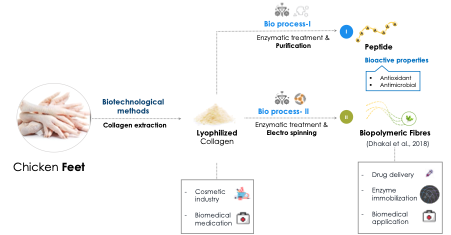 The team at AIT Biotechnology Lab has been successfully extracting collagen from chicken feet and bones, using low-cost biotechnological methods.
The team at AIT Biotechnology Lab has been successfully extracting collagen from chicken feet and bones, using low-cost biotechnological methods.
Collagen extracted from these chicken parts has various applications in food and pharmaceutical industries. With the right technology and technical knowhow, the team at AIT Biotech has many ways to generate wealth from different kinds of poultry waste.
“By-products and wastes of food processing, which represent a major disposal problem for the industry concerned, are very promising sources of value-added substances, with particular emphasis being given to the retrieval of high-value bioactive compounds,” concluded Prof. Anil Kumar Anal.
Adding not only values to food waste, the team AIT Biotechnology Lab also adds incentives to those working towards sustainable development goals – toward a more sustainable future.
Further read:
Eggshell membrane
- Preparation of eggshell membrane protein hydrolysates and culled banana resistant starch-based emulsions and evaluation of their stability and behavior in simulated gastrointestinal fluids
- Optimization of extraction of functional protein hydrolysates from chicken egg shell membrane (ESM) by ultrasonic assisted extraction (UAE) and enzymatic hydrolysis
- Production and characterization of functional properties of protein hydrolysates from egg shell membranes by lactic acid bacteria fermentation
Chicken Feather
Chicken Feet and Bones
Research works carried out at AIT Biotechnology and Food Process Engineering Lab:
Food Safety works carried out in Prof Anil Lab Group:

